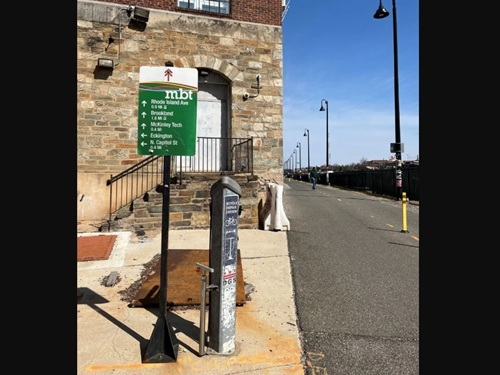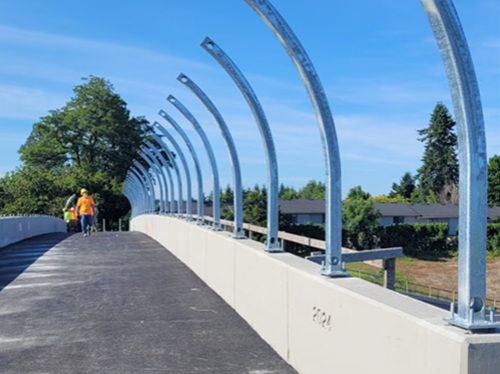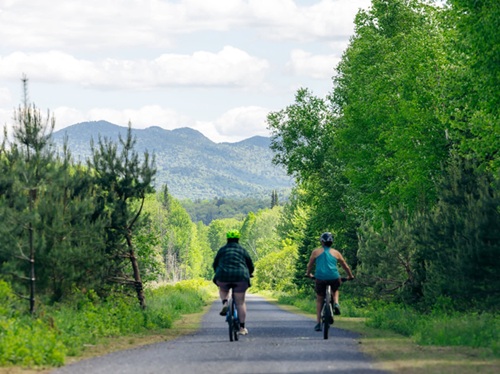In 2018, the Washington State Department of Transportation improved two intersections along State Road 500 in Vancouver, WA, reducing crashes by 70 percent – but those safety changes left some people with no way to cross the busy road. That’s when the need for a new pedestrian bridge became clear.
[Above photo by WSDOT]
Part of SR 500 is a major connector between I-5 and I-205; a six-mile stretch of four-lane highway that averages 60,000 cars a day. In 2018, there were only two traffic signals on that section of SR 500 – one at Northeast Stapleton Road/Northeast 45th Ave., and one at Northeast Falk Road/Northeast 42nd Ave.
Those two intersections were averaging about 400 crashes a year, many of which were rear-end crashes at the traffic signals. That’s why WSDOT removed the traffic signals on the highway seven years ago; allowing only right turns at the interchanges.
With no signals or left-hand turns to slow traffic, crashes plummeted, but the unabated 55-mile-per hour traffic made at-grade pedestrian crossings impossible. A pedestrian bridge already was in place at Falk/42nd Avenue, but it was a half-mile away from Stapleton/45th Avenue, where SR 500 bisects two residential areas.
“When we removed the signalized intersections to improve driver safety, it impacted those who walk, bike, or use mobility devices,” explained Sarah Hannon-Nein, WSDOT’s Southwest Region communications manager. “We fixed one problem and potentially created another one.”
While active transportation users and advocates pushed WSDOT to build a pedestrian bridge over the busy highway, the agency said funding wouldn’t be available for several years. “We made it very clear to the community that once funding was available, we would restore access,” Hannon-Nein said. “That promise was always there.”
Now, WSDOT has delivered on that promise – finishing construction in mid-June on a $8.7 million bridge above SR 500 exclusively for pedestrians and other active transportation users.
With no funding for a new bridge, WSDOT bought time in 2018 by contracting with a local transit agency to provide free, on-demand bus rides for pedestrians, bicyclists, or wheelchair users who needed to cross SR 500. Those free rides continued through the completion of the pedestrian bridge.
The agency also undertook “pretty extensive community engagement” in 2018 to get feedback about the planned bridge, Hannon-Nein said. People wanted a safe crossing for pedestrians, bicyclists, and wheelchair users that would be low-cost, low-maintenance and would fit the visual aesthetic of the corridor. “We listened to the community and we put those priorities into the design,” she noted.
The new bridge has straight, gradually inclining ramps that tie into existing sidewalks. It features a halfway landing on each bridge approach to give users a rest, and a wide turning radius to make the climb easy for bicyclists and people using wheelchairs.
“This is a project that we are really excited to deliver for the community,” Hannon-Nien pointed out. “This project reflects the promise to the community, but it’s more than just a structure. It’s a step forward in safety and equity in transportation for all users.”
 Active Transportation
Active Transportation



